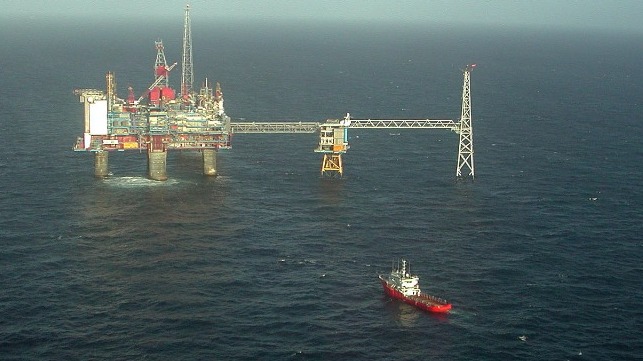Pipeline Crack Prompts Transport Shutdown at Sleipner Riser Platform

Equinor's Sleipner Riser platform has been forced to shut down some of its gas transport operations due to a crack in a pipe on board, and repairs to return it to service could take until June 7. The outage prompted a 10 percent jump in the benchmark Dutch TTF natural gas futures market, moderating to a five percent increase at the close on Monday.
According to Norwegian gas production company Gassco, a crack was discovered in a two-inch pipeline aboard the Sleipner Riser platform. The facility is the junction point for the Langeled North and Langeled South pipelines, which connect Norwegian gas sources with UK markets.
Gassco said that the platform's workers have shut down the connection temporarily for maintenance, causing a gas transport outage for export of natural gas from the Nyhamna processing plant to the UK's Easington receiving terminal on the other side of the North Sea.
The Langeled pipeline system (or Britpipe) is a subsea gas line completed in 2006-7. It connects Easington to the Sleipner Riser platform, then Sleipner Riser to Nyhamna, which feeds in gas from the Ormen Lange field. (Ormen Lange is a 100-percent subsea installation, with no offshore platforms.) Its maximum capacity is about 26 billion cubic meters a year, or roughly one fifth of the UK's annual natural gas needs.
The Sleipner Riser platform (Sleipner R) can transport dry gas from the prolific Sleipner field into pipelines connecting to Draupner and Zeebrugge, in addition to Easington. It is also a connection point for an export pipeline from the onshore Kollsnes gas processing plant.
Equinor has invested heavily in electrifying operations at the Sleipner field, and as of April, all installations in the area are receiving power from shore, saving emissions amounting to about 1.2 million tonnes of CO? per year.
